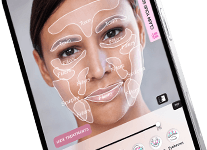Have you ever noticed tiny freckles popping up on your cheeks? Or maybe a few stubborn brown spots or recently formed beauty marks that weren’t there before? If so, it’s a common issue—and chances are, these could be early signs of sun damage or melasma. Both are common skin concerns caused by prolonged exposure to direct sunlight.
Pigmentation issues can feel like a complex puzzle—one that can quietly chip away at your confidence every time you glance in the mirror. However, before you can effectively treat those dark spots or uneven patches, it’s essential to understand what’s causing them. So let’s break down melasma vs sun damage, helping you distinguish between them and find the right solution for clearer, healthier skin.
Melasma vs Sun Damage: What’s Happening Beneath the Surface?
When we talk about Melasma vs Sun Damage, we’re talking about two distinct skin conditions with different causes:

Key Differences You Can Spot: Melasma vs Sun Damage
- Location & Pattern: Melasma typically appears symmetrically on the cheeks, forehead, nose bridge, and above the upper lip. Sun damage appears as scattered patches, often irregular, and affects multiple sun-exposed areas, such as the arms, hands, chest, and neck.
- Skin Texture: Melasma causes color change but not texture change. Photoaging from sun damage, however, results in roughness, sagging, spider veins, and even scaly red patches like actinic keratosis.
- Triggers: Hormones (estrogen and progesterone), pregnancy, and heat can trigger melasma. Sun damage results from cumulative UV exposure, tanning beds, and lack of SPF protection.
When comparing Melasma vs Sun Damage, remember that their triggers and patterns are key to choosing the right treatment.
Diagnosis: Still Unsure?
Consult a dermatologist or aesthetic clinic with diagnostic tools like Wood’s lamp examination to determine the pigment depth. Furthermore, you can visit Specialty Wellness in The Colony, Texas, which also offers deep skin analysis to pinpoint the cause and severity of pigmentation.
Treatment Options: Melasma vs Sun Damage
Facial Services
- HydraFacial: Deep cleansing and exfoliation that can help fade pigmentation and brighten skin.
- Chemical Peels: Effective for melasma and surface pigmentation; promotes even tone.
- Dermaplaning Facial: Removes dead skin cells, making skin more receptive to treatments.
Lasers & Technology
- LaseMD Ultra™: Great for pigmentation and overall skin rejuvenation.
- RF Microneedling: Stimulates collagen while reducing pigmentation.
- CO2 Lasers: Best for severe sun damage and uneven tone.
Medical-Grade Skincare
- Maintain results with dermatologist-trusted brands like SkinBetter Science and SkinMedica.
Prevention Tips: Protecting Your Skin From Both
Whether you’re already treating melasma or sun damage, or hoping to prevent future pigmentation, consistent sun care is crucial:
- Apply broad-spectrum SPF 30+ every day—even indoors or on cloudy days.
- Reapply sunscreen every 2–3 hours if you’re outside.
- Wear sun-protective clothing and wide-brimmed hats.
- Avoid peak sun hours between 10 AM and 4 PM.
- Use blue-light filters if you have high screen time, especially if you’re prone to melasma.
- Review your medications—some increase sun sensitivity.
Both melasma and sun damage are common skin concerns, but understanding their root causes is your first step toward treating them effectively. Melasma is more hormonally driven, whereas sun damage is primarily a result of accumulated UV exposure.















